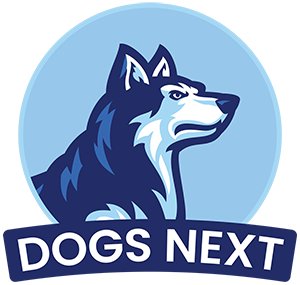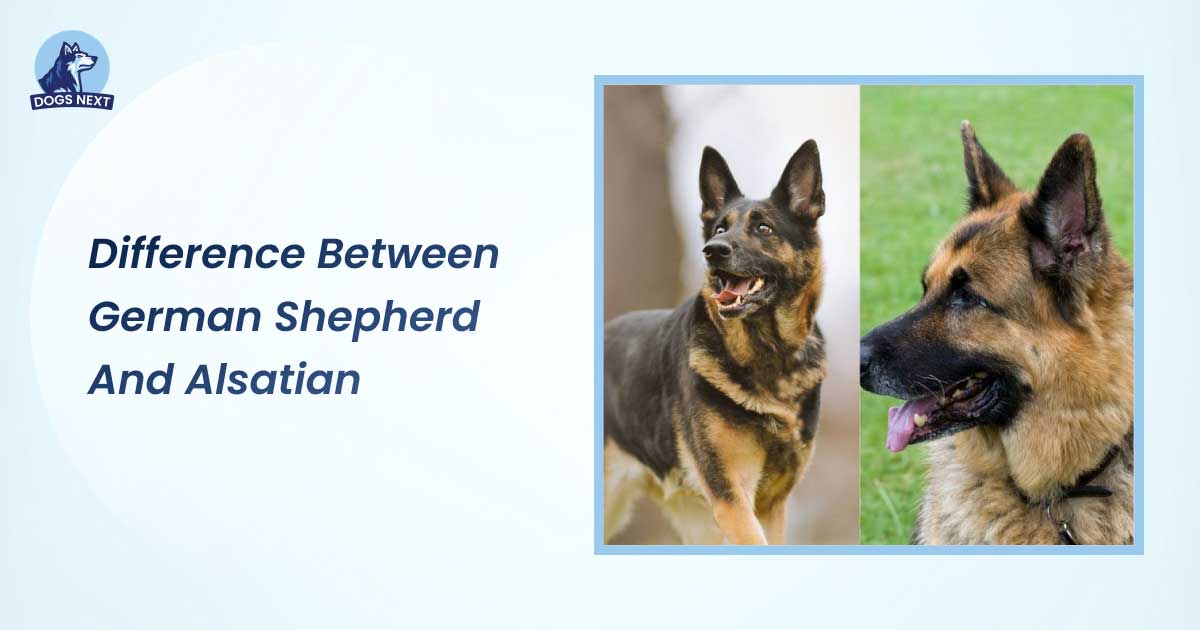The German Shepherd and Alsatian are often thought to be different. But they are actually the same breed.
The terms “German Shepherd” and “Alsatian” can confuse many dog lovers. These names refer to the same loyal and intelligent breed. The distinction arose during World War I, when British soldiers began calling the German Shepherd “Alsatian” to avoid the anti-German sentiment of the time.
This name stuck in some regions, while others continued with “German Shepherd. ” Understanding this history helps in recognizing that the breed’s characteristics remain consistent, no matter the name. This introduction aims to clarify the confusion and provide insights into the unique traits of this beloved dog breed.
Origin And History Of Both Names
The terms “German Shepherd” and “Alsatian” are often used interchangeably to refer to the same breed. However, their names have different origins and historical backgrounds. Understanding the origin and history of both names can offer insight into the breed’s past and how it has been perceived over time.
German Shepherd
The term “German Shepherd” is deeply rooted in the breed’s history. The breed was developed in Germany in the late 19th century. Max von Stephanitz, a German cavalry officer, is often credited with creating the German Shepherd as we know it today. He aimed to develop a breed that was both intelligent and versatile.
Key points in German Shepherd history include:
- First established in 1899 by Max von Stephanitz
- Bred for herding and guarding purposes
- Known for their intelligence, strength, and loyalty
During World War I, the breed’s association with Germany led to a decline in its popularity in Allied countries. Yet, the breed’s remarkable traits kept it in demand. The name “German Shepherd” reflects its origin and the breed’s primary use as a herding dog in Germany.
Alsatian
The name “Alsatian” has a different story. During World War I, anti-German sentiment was high in the Allied countries. To avoid negative connotations associated with Germany, the British began calling the breed “Alsatian.” This name was derived from the Alsace-Lorraine region, a contested area between France and Germany.
Important aspects of Alsatian origin include:
- Renamed during World War I by the British
- Named after the Alsace-Lorraine region
- Used to avoid anti-German sentiment
For many years, the breed was known as the Alsatian in the UK and other parts of the world. It wasn’t until 1977 that the British Kennel Club reverted to the original name, German Shepherd. The name “Alsatian” is still used by some, reflecting its historical significance and the breed’s global journey.
Physical And Temperamental Similarities
The terms “German Shepherd” and “Alsatian” often confuse people. Despite their different names, these two refer to the same breed. Let’s explore the physical and temperamental similarities of this well-loved dog breed.
Both Names Refer To The Same Breed With Similar Traits
Many people think that German Shepherds and Alsatians are different breeds. In reality, they are the same. The name “Alsatian” originated during World War I. The British feared that the name “German Shepherd” would hurt the breed’s popularity due to its association with Germany. So, they named it after the Alsace region in France.
Despite the different names, the breed’s traits remain consistent. Both German Shepherds and Alsatians share similar physical and temperamental characteristics. They have a strong and muscular build, with a well-proportioned body. Their ears stand erect, giving them a keen and alert look.
- Size: Males usually weigh between 65-90 pounds, while females weigh between 50-70 pounds.
- Height: Males stand about 24-26 inches tall, and females stand about 22-24 inches tall.
- Coat: They have a double coat that can be medium or long, with colors ranging from black and tan to sable.
Temperament is another area where German Shepherds and Alsatians show remarkable similarities. They are known for their loyalty, intelligence, and courage. These dogs are highly trainable and excel in various roles, including police work, search and rescue, and as service dogs.
Their protective nature makes them excellent guard dogs. Yet, they are also gentle and loving with their families. They have a strong bond with their owners, making them a popular choice for families.
Characteristics
The characteristics of German Shepherds, also known as Alsatians, are what make this breed unique and beloved by many. Their physical traits and temperamental features combine to create a versatile and dependable dog.
Physically, both German Shepherds and Alsatians share the following traits:
| Physical Trait | Details |
| Build | Strong, muscular, and well-proportioned |
| Coat | Double coat, medium to long, various colors |
| Height | Males: 24-26 inches, Females: 22-24 inches |
| Weight | Males: 65-90 pounds, Females: 50-70 pounds |
Temperamentally, German Shepherds and Alsatians are known for their intelligence and trainability. These traits make them ideal for various roles, such as:
- Police and military work
- Search and rescue operations
- Service and therapy roles
German Shepherds are also known for their loyalty and protective nature. They form strong bonds with their families and are always eager to please their owners. This makes them not only great working dogs but also wonderful family pets.
In summary, whether you call them German Shepherds or Alsatians, the breed’s traits remain the same. They are strong, intelligent, and loyal dogs, known for their versatility and dependability.
Regional Naming Differences
When discussing the regional naming of German Shepherds, many people get confused between the terms “German Shepherd” and “Alsatian.” Both names refer to the same breed, but their usage varies based on the region. Understanding these differences can help clarify why this majestic dog has two distinct names.
Regional Preferences And Historical Context For Each Name
During World War I, anti-German sentiment was high. To protect the breed’s reputation, the UK Kennel Club renamed the German Shepherd to “Alsatian.” This name came from the Alsace region of France, which borders Germany. Over time, the name “Alsatian” became widely used in the United Kingdom and some parts of Europe.
Here is a brief overview of the historical context and regional preferences:
- Germany: The breed is known as “Deutscher Schäferhund,” which translates directly to “German Shepherd Dog.”
- United Kingdom: Initially adopted the name “Alsatian” during the World Wars to avoid anti-German sentiment. The name “German Shepherd” is now also accepted.
- United States: The American Kennel Club (AKC) has always recognized the breed as the “German Shepherd.”
- Other regions: Mixed usage, with some countries favoring “German Shepherd” and others “Alsatian.”
These regional preferences are deeply rooted in historical events and cultural sensitivities. The name “Alsatian” was a strategic move to preserve the breed’s popularity during turbulent times. Although “German Shepherd” is more commonly used today, “Alsatian” still holds historical significance in certain areas.
Popularity Of Each Name In Different Parts Of The World
The global names for the breed vary, reflecting both historical and cultural influences. In the United States, “German Shepherd” dominates. The American Kennel Club (AKC) lists the German Shepherd as one of the most popular breeds. The name “Alsatian” is rarely used in the U.S.
In the United Kingdom, both names are recognized. However, “German Shepherd” has become more prevalent in recent years. The Kennel Club now lists the breed as “German Shepherd (Alsatian),” acknowledging both names. This dual naming helps bridge the gap between historical and modern usage.
Here is a table summarizing the popularity of each name in different regions:
| Region | Preferred Name |
| United States | German Shepherd |
| United Kingdom | German Shepherd (Alsatian) |
| Germany | Deutscher Schäferhund (German Shepherd) |
| France | Berger Allemand (German Shepherd) |
| Australia | German Shepherd |
In other parts of the world, the name preferences for German Shepherds vary. In Germany, the breed is known as “Deutscher Schäferhund.” In France, it is called “Berger Allemand.” These names reflect the breed’s German origins while aligning with local language preferences.
The regional naming of German Shepherds shows how historical events and cultural differences shape our language. Whether you call them German Shepherds or Alsatians, this breed remains one of the most beloved and recognized worldwide.
Frequently Asked Questions
Are German Shepherds And Alsatians The Same?
Yes, German Shepherds and Alsatians are the same breed. The name “Alsatian” is used in the UK, while “German Shepherd” is used internationally.
Why Are German Shepherds Called Alsatians?
After World War I, the UK renamed German Shepherds to Alsatians to avoid anti-German sentiment. The name was derived from the Alsace region in France.
Which Name Is More Common, German Shepherd Or Alsatian?
“German Shepherd” is more commonly used worldwide. “Alsatian” is primarily used in the United Kingdom.
Are There Any Physical Differences Between Alsatians And German Shepherds?
No, there are no physical differences. Both names refer to the same breed with identical characteristics and traits.
Conclusion
German Shepherds and Alsatians are the same breed with different names. Both are loyal, smart, and protective dogs. They excel in various roles, from family pets to working dogs. Understanding their traits helps in choosing the right dog. Their names may vary, but their qualities remain consistent.
Whether you call them German Shepherds or Alsatians, they make wonderful companions. Always research well before bringing one home. Your perfect furry friend awaits!

I’m David, an expert contributor and writer, with two furry friends of my own, I know the challenges of raising and caring for dogs. From training to nutrition and health, my goal is to provide valuable insights and advice to help create strong bonds and happy, healthy lives. Find me in Twitter.




